- Главная
- Разное
- Бизнес и предпринимательство
- Образование
- Развлечения
- Государство
- Спорт
- Графика
- Культурология
- Еда и кулинария
- Лингвистика
- Религиоведение
- Черчение
- Физкультура
- ИЗО
- Психология
- Социология
- Английский язык
- Астрономия
- Алгебра
- Биология
- География
- Геометрия
- Детские презентации
- Информатика
- История
- Литература
- Маркетинг
- Математика
- Медицина
- Менеджмент
- Музыка
- МХК
- Немецкий язык
- ОБЖ
- Обществознание
- Окружающий мир
- Педагогика
- Русский язык
- Технология
- Физика
- Философия
- Химия
- Шаблоны, картинки для презентаций
- Экология
- Экономика
- Юриспруденция
Что такое findslide.org?
FindSlide.org - это сайт презентаций, докладов, шаблонов в формате PowerPoint.
Обратная связь
Email: Нажмите что бы посмотреть
Презентация на тему The gender wage gap and wage discrimination
Содержание
- 2. НistoryAfter more than a generation since the
- 3. In 1999, women's median weekly earnings for
- 4. Modern situationThe World Economic Forum's Gender Gap
- 5. In the U.S., the Bureau of Labor
- 6. Wage discriminationMany believe that the wage gap
- 7. It is generally suggested that the wage
- 8. However there is still debate over whether
- 9. The first step in understanding the composition
- 14. Several studies have shown that, in the United States,
- 15. Numbers vary wildly from study to study,
- 16. PensionsThe European Commission argues that the gender pay gap
- 17. Economic Theories of the Gender Pay GapMarginal
- 18. Discrimination In Neoclassical economics, discrimination is considered
- 19. Monopsony Explanation In monopsony theory, wage discrimination can be explained
- 20. Effect of Socialization on Gender Pay-gapsAnother social
- 21. Nonetheless, women continue to do well in
- 22. Men are more likely to be in
- 23. Anti-discrimination legislationAccording to the 2008 edition of
- 24. The OECD points out that: in all
- 25. Moreover, although many OECD countries have put
- 26. In 2003, the U.S. Government Accountability Office (GAO) found
- 27. Скачать презентацию
- 28. Похожие презентации
НistoryAfter more than a generation since the Equal Pay Act of 1963 and the Civil Rights Act of 1964 together barred employment and wage discrimination, the gap between men's and women's average earnings is still wide.
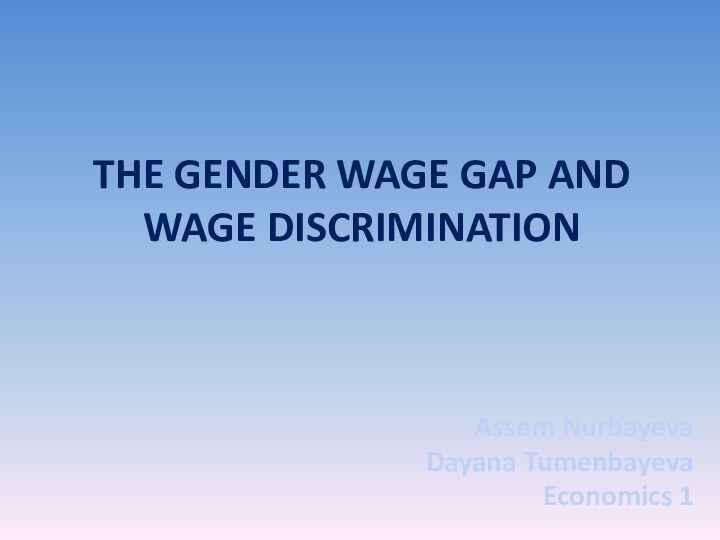
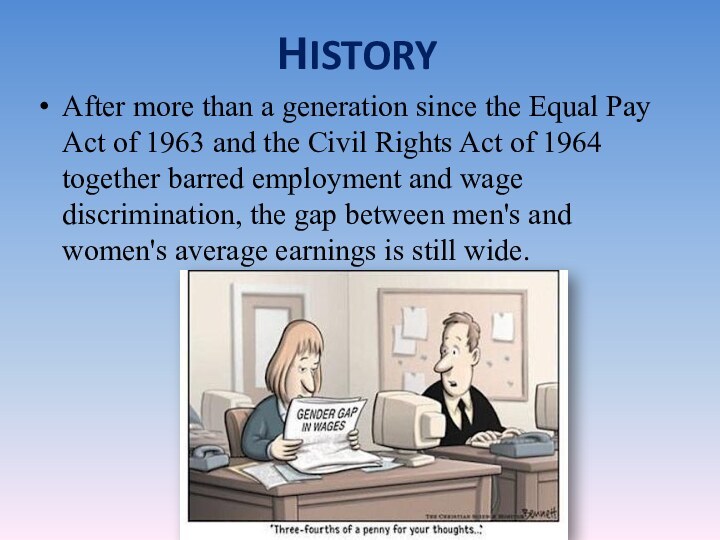
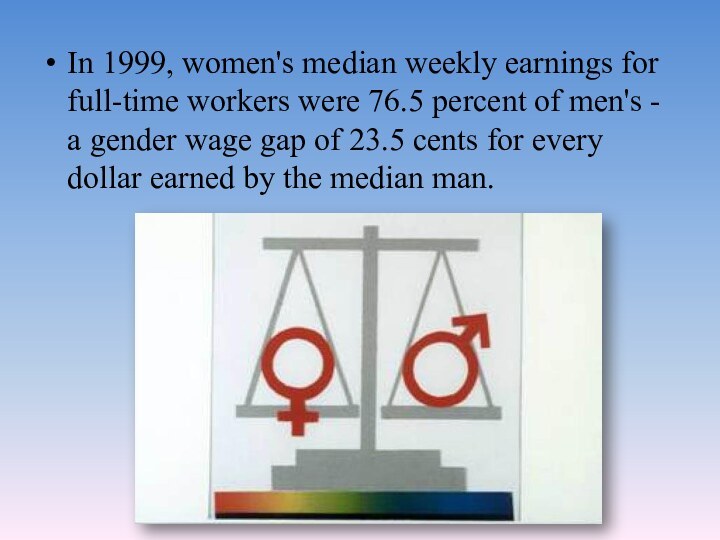
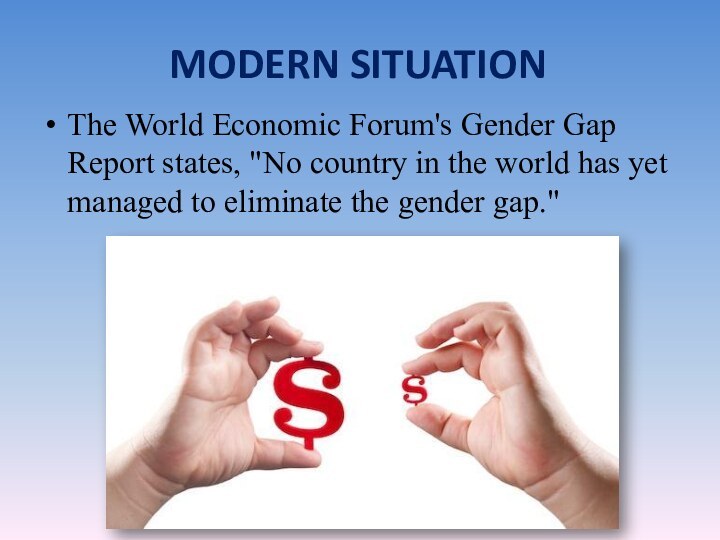
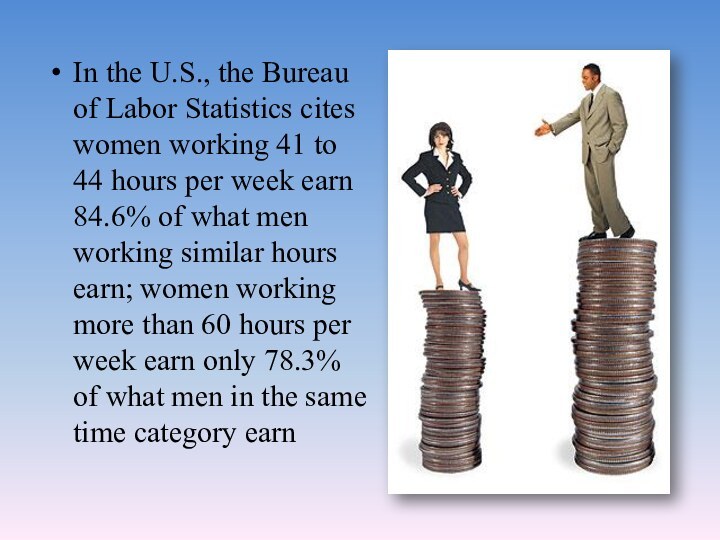
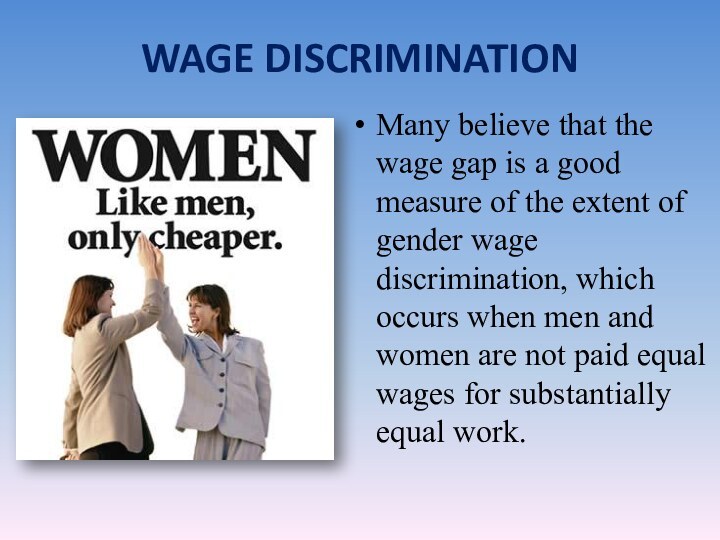

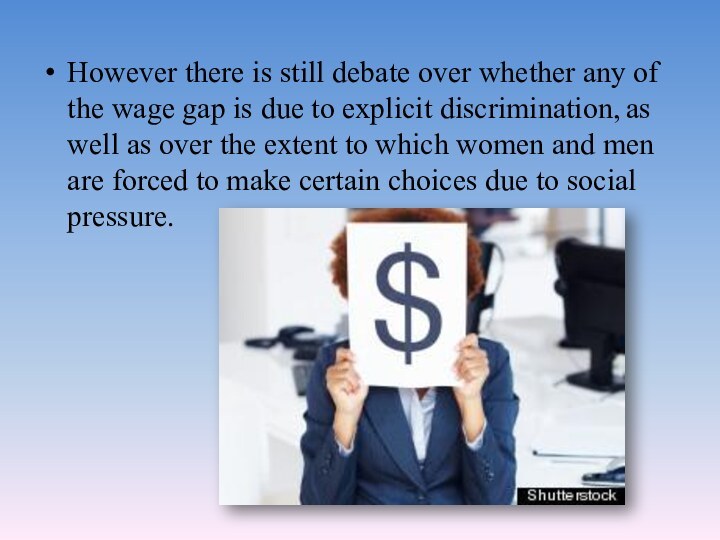
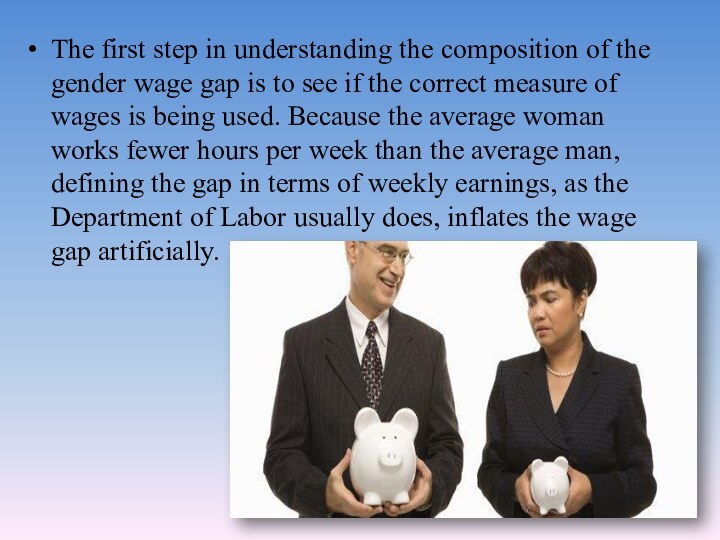

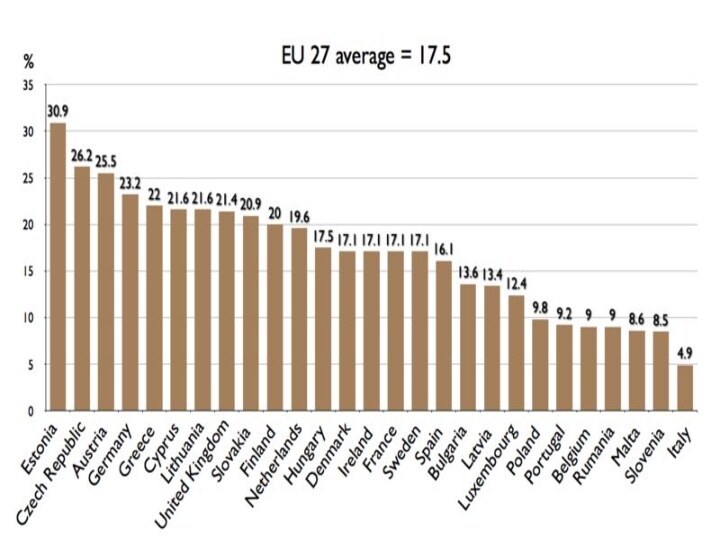
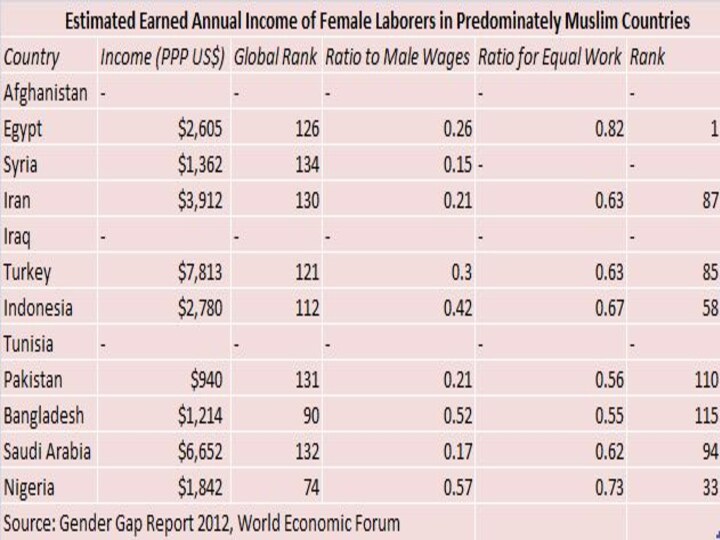

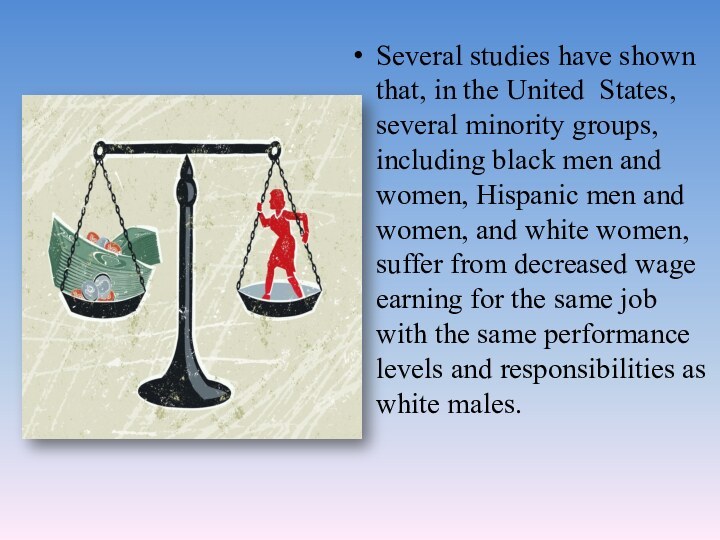

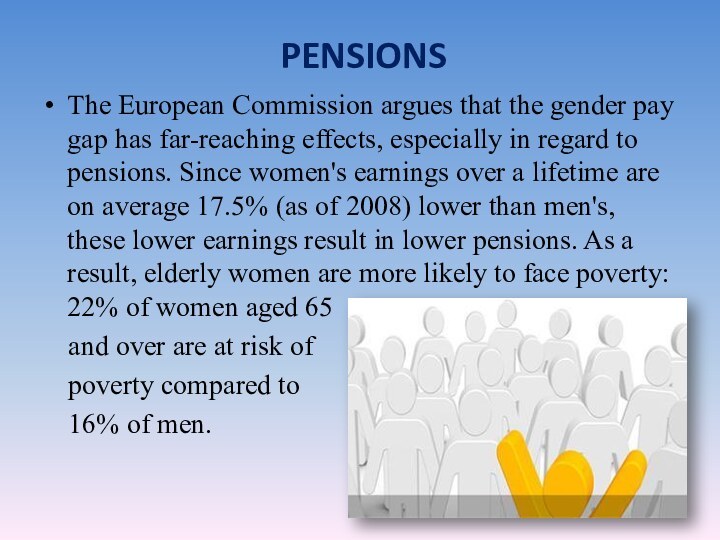
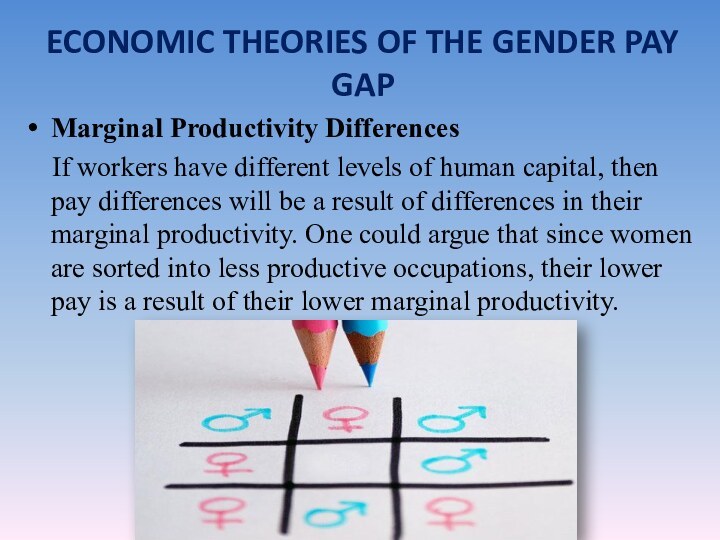
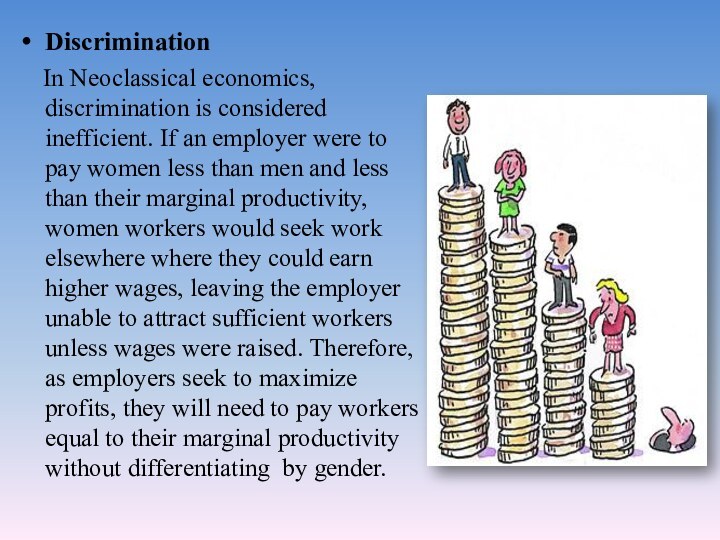

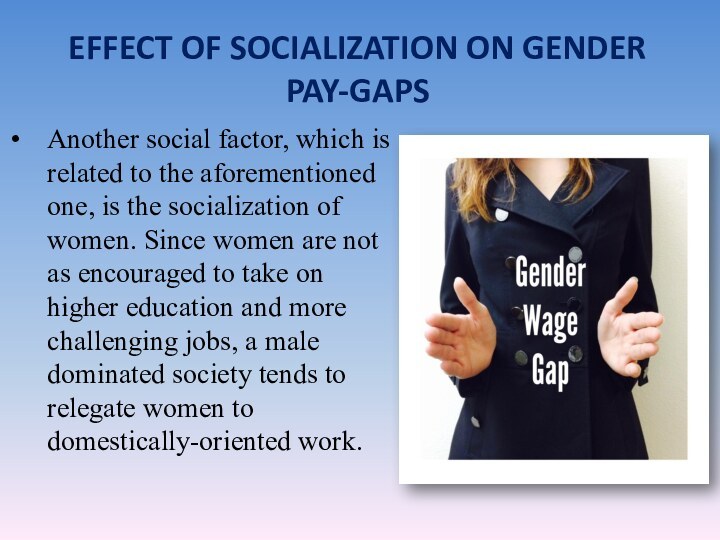

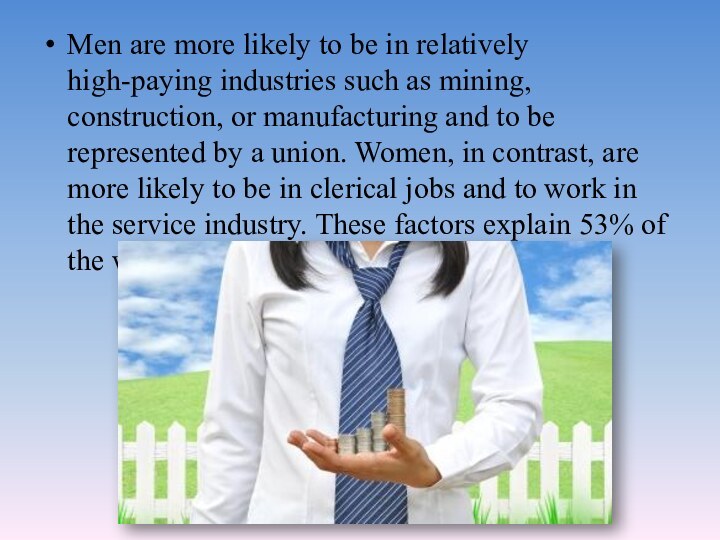
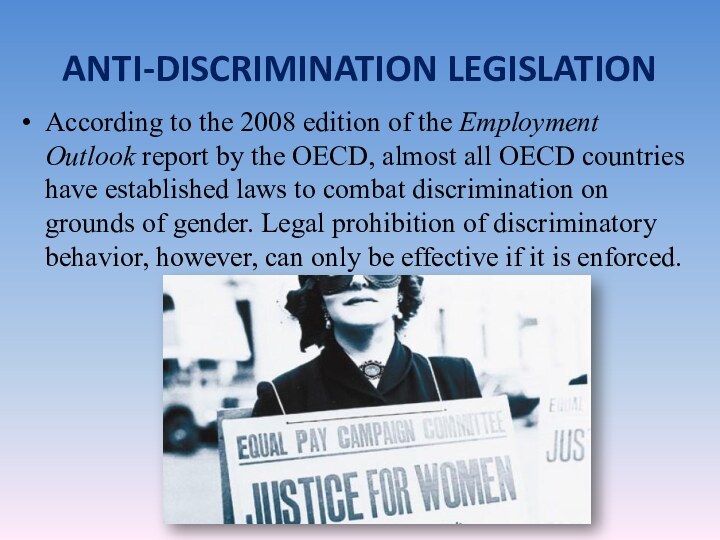
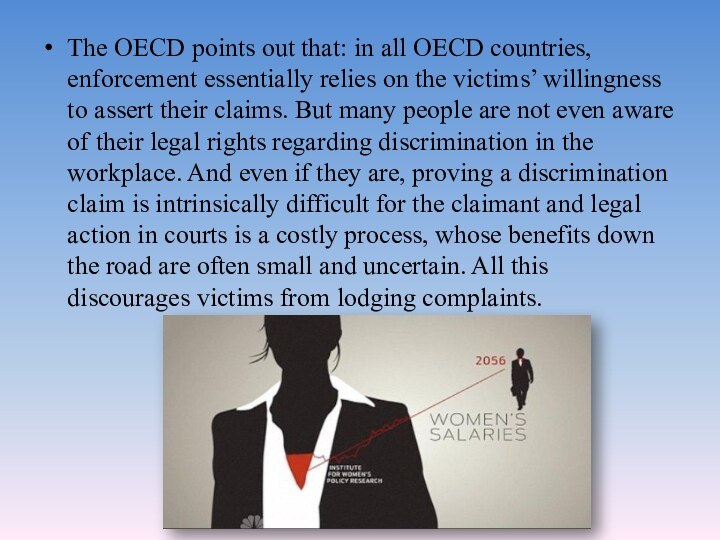
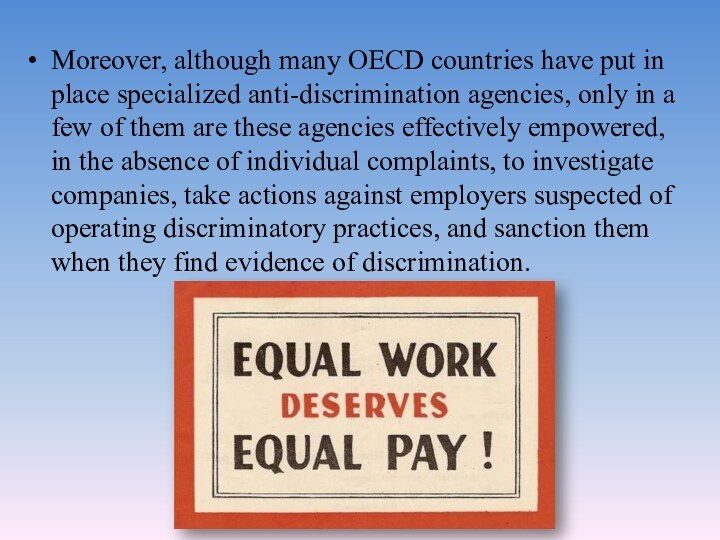

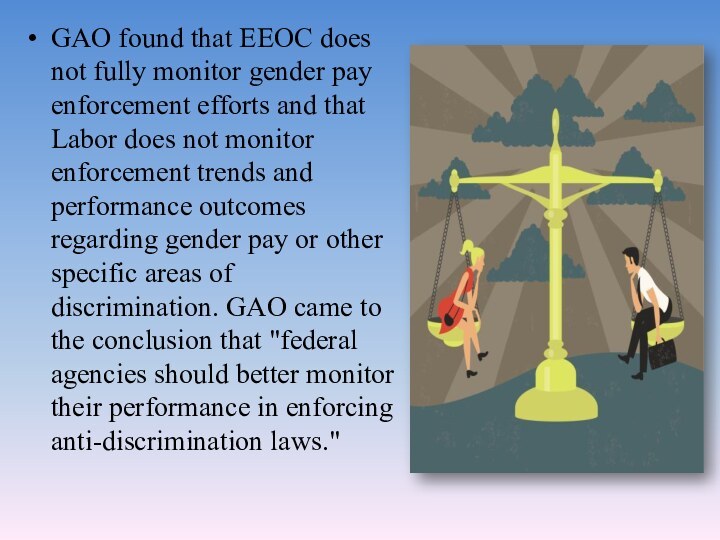
Слайд 3 In 1999, women's median weekly earnings for full-time
workers were 76.5 percent of men's - a gender
wage gap of 23.5 cents for every dollar earned by the median man.
Слайд 4
Modern situation
The World Economic Forum's Gender Gap Report
states, "No country in the world has yet managed
to eliminate the gender gap."Слайд 5 In the U.S., the Bureau of Labor Statistics
cites women working 41 to 44 hours per week
earn 84.6% of what men working similar hours earn; women working more than 60 hours per week earn only 78.3% of what men in the same time category earn
Слайд 6
Wage discrimination
Many believe that the wage gap is
a good measure of the extent of gender wage
discrimination, which occurs when men and women are not paid equal wages for substantially equal work.Слайд 7 It is generally suggested that the wage gap
is due to a variety of causes, such as
differences in the types of positions held by men and women, differences in the pay of jobs men typically go into as opposed to women, and differences in amount of work experience, and breaks in employment.Слайд 8 However there is still debate over whether any
of the wage gap is due to explicit discrimination,
as well as over the extent to which women and men are forced to make certain choices due to social pressure.Слайд 9 The first step in understanding the composition of
the gender wage gap is to see if the
correct measure of wages is being used. Because the average woman works fewer hours per week than the average man, defining the gap in terms of weekly earnings, as the Department of Labor usually does, inflates the wage gap artificially.Слайд 14 Several studies have shown that, in the United States, several minority
groups, including black men and women, Hispanic men and
women, and white women, suffer from decreased wage earning for the same job with the same performance levels and responsibilities as white males.Слайд 15 Numbers vary wildly from study to study, but
most indicate a gap from 5 to 15% lower
earnings on average, between a white male worker and a black or Hispanic man or a woman of any race with equivalent educational background and qualifications.
Слайд 16
Pensions
The European Commission argues that the gender pay gap has
far-reaching effects, especially in regard to pensions. Since women's
earnings over a lifetime are on average 17.5% (as of 2008) lower than men's, these lower earnings result in lower pensions. As a result, elderly women are more likely to face poverty: 22% of women aged 65and over are at risk of
poverty compared to
16% of men.





























